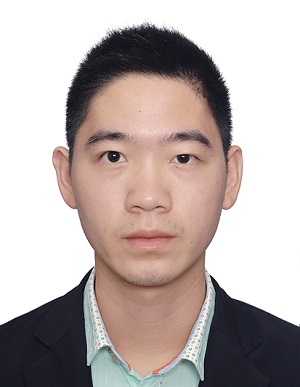
Changchang Cao (Resigned), Ph.D, Associate Professor
-
Member of the Youth Innovation Promotion Association of CAS
Key Laboratory of Nucleic Acid Biology, IBP, CAS
Research Interests: higher-order structures and functional mechanisms of non-coding RNAs
Email: caochch@ibp.ac.cn; caochch@gmail.com
Tel: 010-64888574
Address: 15 Datun Road, Chaoyang District, Beijing, 100101, China
Chinese personal homepage
- Biography
2007.09 - 2011.06 B.S., Southeast University
2010.03 - 2011.05 Bioinformatics Engineer, BGI-Shenzhen
2011.09 - 2017.01 Ph.D, Southeast University
2017.01 - 2017.07 Trainee, Institute of Biophysics, CAS
2017.08 - 2019.12 Assistant Professor, Institute of Biophysics, CAS
2020.01 - 2023.04 Associate Professor Institute of Biophysics, CAS
- Awards
- Membership in Academies & Societies
- Research Interests
More than 98% of the human genome are non-coding regions, which generate vast non-coding RNAs through pervasive transcription. Non-coding RNAs play crucial roles in regulating various life activities such as differentiation, development, aging, and disease. Unlike messenger RNA, non-coding RNA fulfil its regulatory function by forming higher-order spatial conformation and interacting with other RNA molecules. Therefore, my research interests include: 1) decipher the in situ structure of non-coding RNAs; 2) profile the interacting partners of non-coding RNA, especially the targets of enhancer or promoter related RNAs; 3) investigate the functional mechanism and pathogenesis of non-coding RNAs.
- Grants
1. National Natural Science Foundation of China, General Program (32070620), 2021.01- 2024.12
2. National Natural Science Foundation of China, Youth Scientist Program (31900465), 2020.01- 2022.12
3. Beijing Municipal Natural Science Foundation (5182024), 2018.01 - 2020.12
4. Major Research Plan of the National Natural Science Foundation of China (91740201),2018.01 - 2021.12
- Selected Publications
1. Cao C-C#, Cai Z-K#, Xiao Xia#, Rao J, Chen J, Hu N-J, Yang M-N, Xing X-R, Wang Y-L, Li M-M, Zhou B, Wang X-X, Wang J-W*, Xue Y-C*. The architecture of the SARS-CoV-2 RNA genome inside virion. Nature Communication, 2021, 12, 3917.
2. Su R-B#, Fan L-H#, Cao C-C#, Wang L, Du Z-C, Cai Z-K, Ouyang Y-C, Wang Y, Zhou Q, Wu L-G, Zhang N, Zhu X-X, Lei W-L, Zhao H-L, Tian Y, He S-M, Wang C*, Sun Q-Y*, Xue Y-C*. Global profiling of RNA-binding protein target sites by LACE-seq. Nature Cell Biology, 2021, 23, 664-675.
3. Cao C-C#, Cai Z-K#, Ye R, Su R-B, Hu N-J, Zhao H-L, Xue Y-C*. Global in situ profiling of RNA-RNA spatial interactions with RIC-seq. Nature Protocols, 2021, 16, 2916-2946.
4. Cai Z-K#, Cao C-C#, Ji L#, Ye R, Wang D, Xia C, Wang S, Du Z-C, Hu N-J, Yu X-H, Chen J, Wang L, Yang X-G, He S-M, Xue Y-C*. RIC-seq for global in situ profiling of RNA-RNA spatial interactions, Nature, 2020, 582(7812): 432-437.
5. Ye R, Cao C-C, Xue Y-C*. Enhancer RNA: biogenesis, function, and regulation. Essays in Biochemistry, 2020, 64(6): 883-894.
6. Chen J#, Cai Z-K#, Bai M-Z#, Yu X-H#, Zhang C#, Cao C-C, Hu X-H, Wang L, Su R-B, Wang D, Wang L, Yao Y-P, Ye R, Hou B-D, Yu Y, Yu S-Y, Li J-S, Xue Y-C*. The RNA binding protein ROD1/PTBP3 cotranscriptionally defines AID-loading sites to mediate antibody class switch in mammalian genomes, Cell Research, 2018, 28(10): 981-995.
7. Li C#, Cao C-C#, Tu J, Sun X*. An accurate clone-based haplotyping method by overlapping pool sequencing. Nucleic acids research, 2016, 44(12):e112.
8. Cao C-C, Sun X*. Combinatorial pooled sequencing: experiment design and decoding. Quantitative Biology, 2016, 4(1):36-46.
9. Cao C-C, Sun X*. Ehapp2: Estimate haplotype frequencies from pooled sequencing data with prior database information. Journal of bioinformatics and computational biology, 2016, 14(4):1650017.
10. Cao C-C, Sun X*. Accurate estimation of haplotype frequency from pooled sequencing data and cost-effective identification of rare haplotype carriers by overlapping pool sequencing. Bioinformatics, 2015, 31(4):515-522.
11. Cao C-C, Li C, Sun X*. Quantitative group testing-based overlapping pool sequencing to identify rare variant carriers. BMC Bioinformatics, 2014, 15(1):195.
12. Cao C-C, Li C, Huang Z, Ma X, Sun X*. Identifying rare variants with optimal depth of coverage and cost-effective overlapping pool sequencing. Genetic epidemiology, 2013, 37:820 - 830.
(From Changchang Cao, October 29, 2021)

